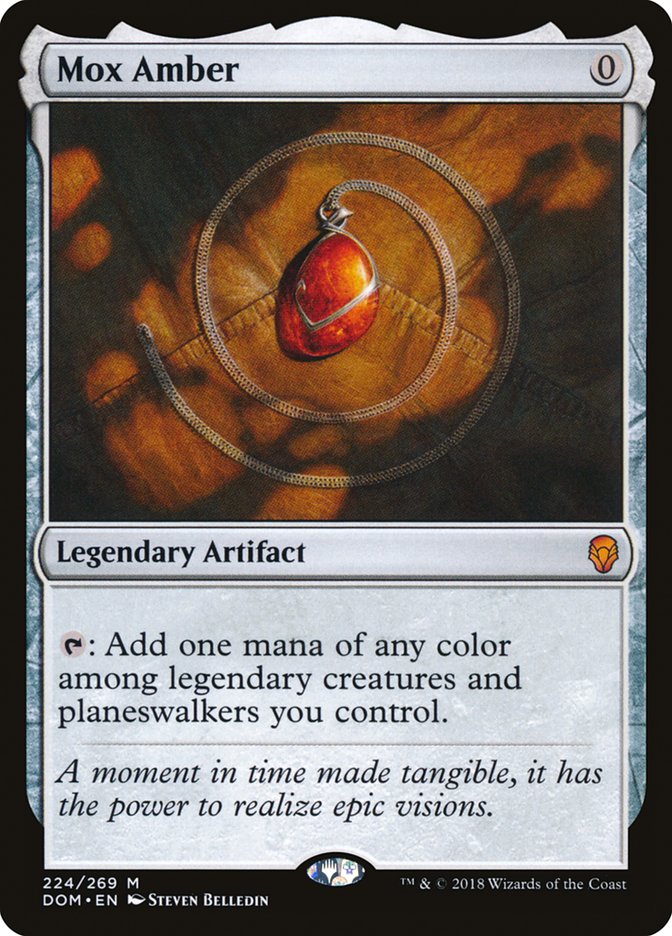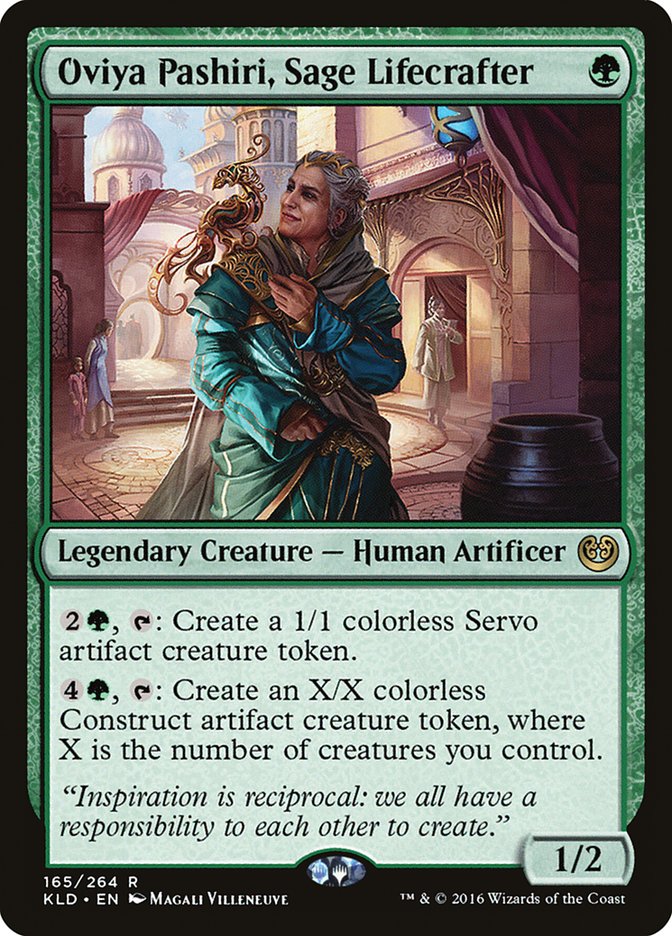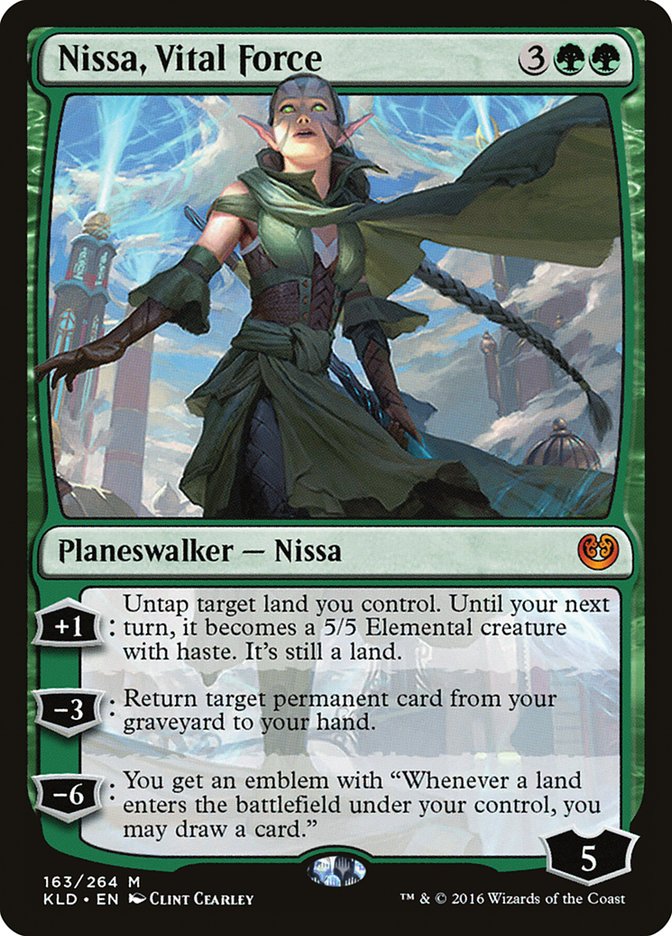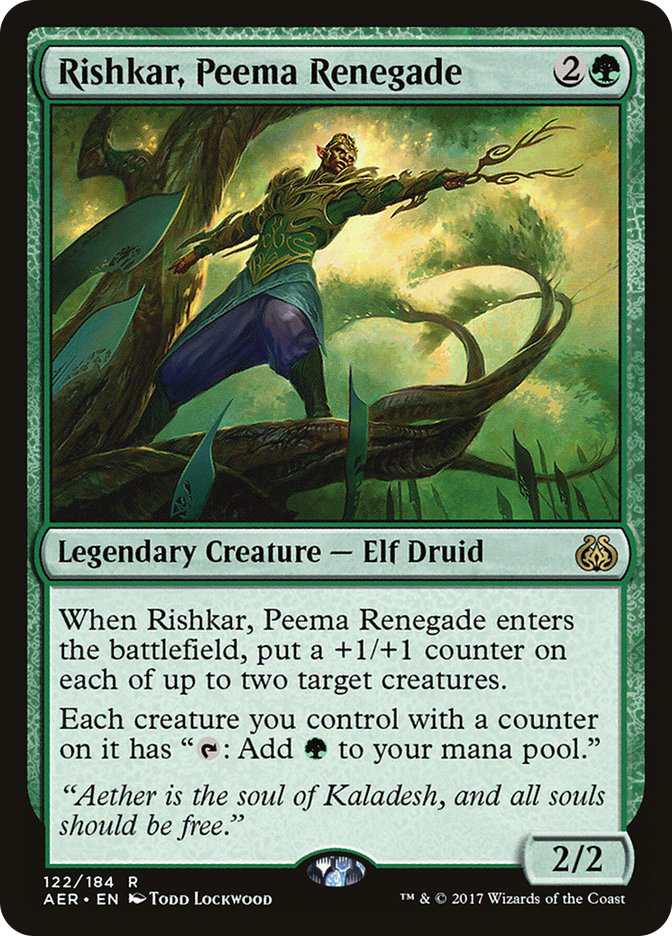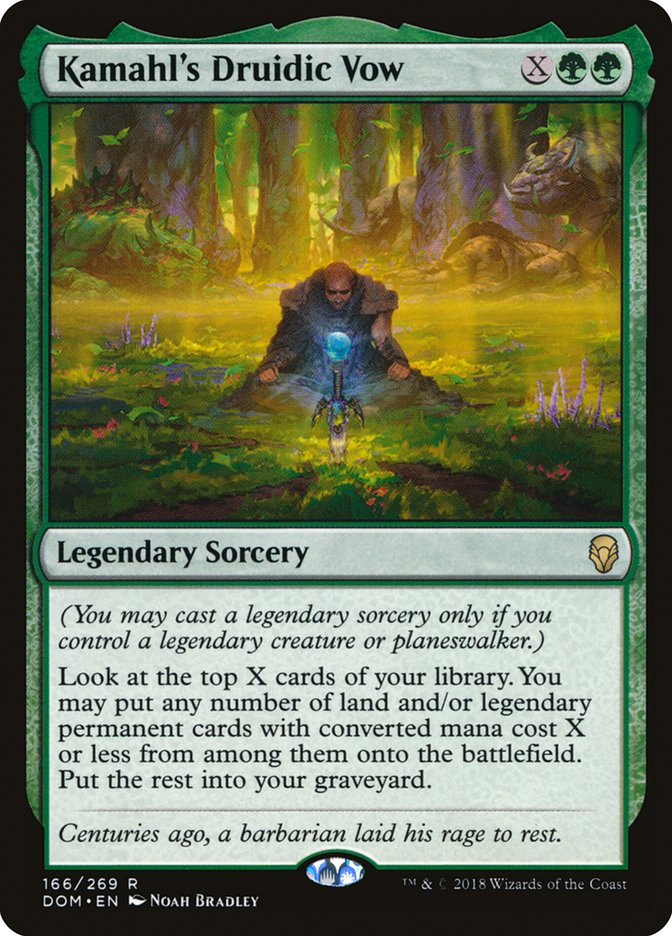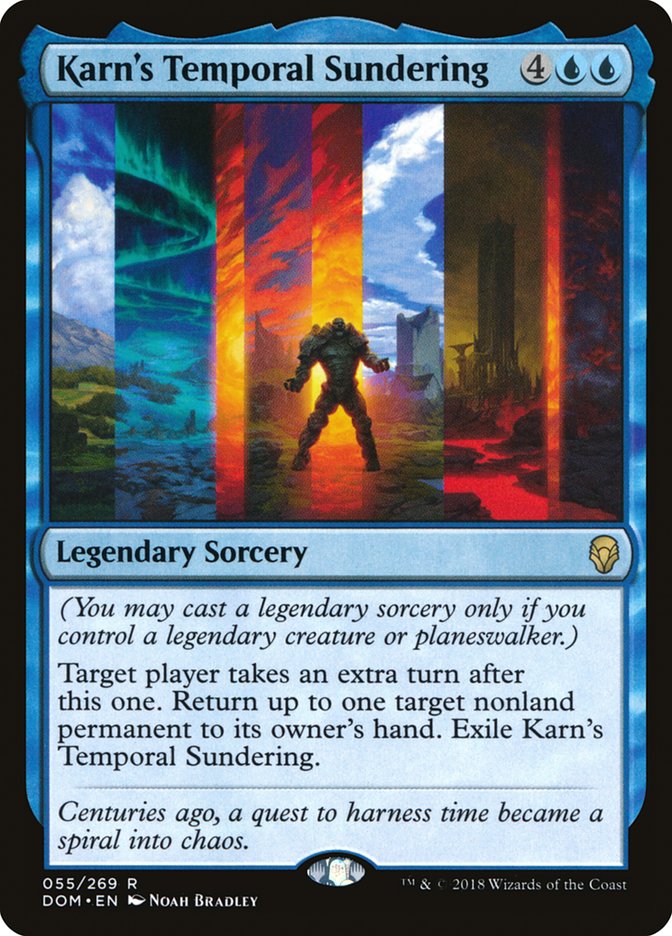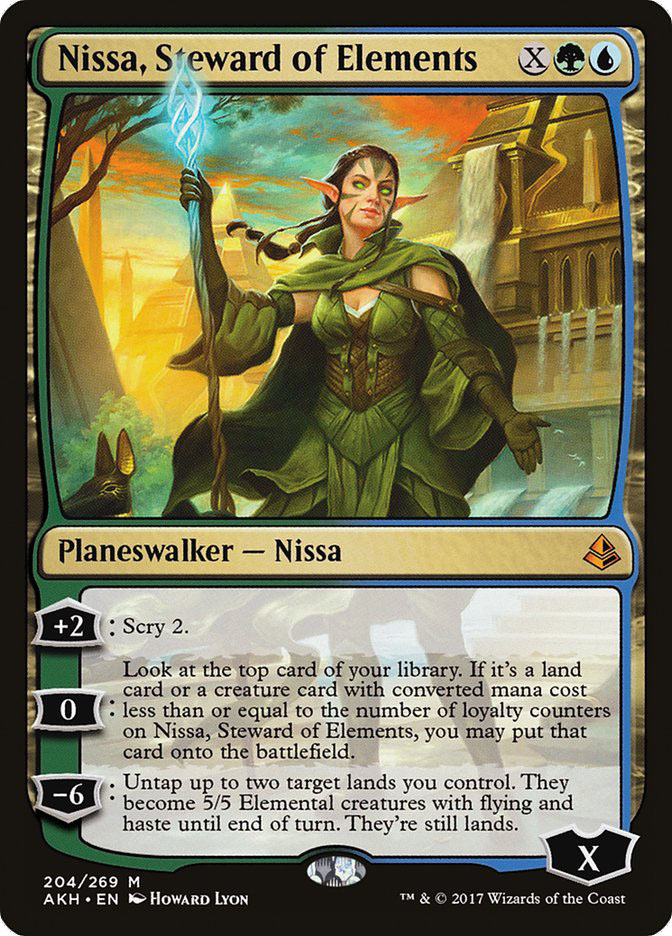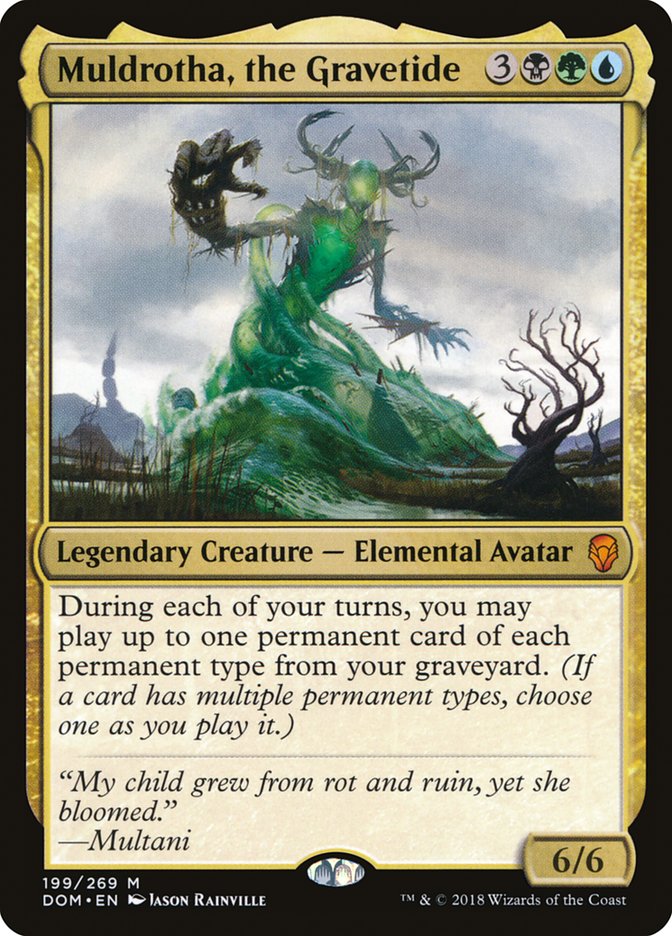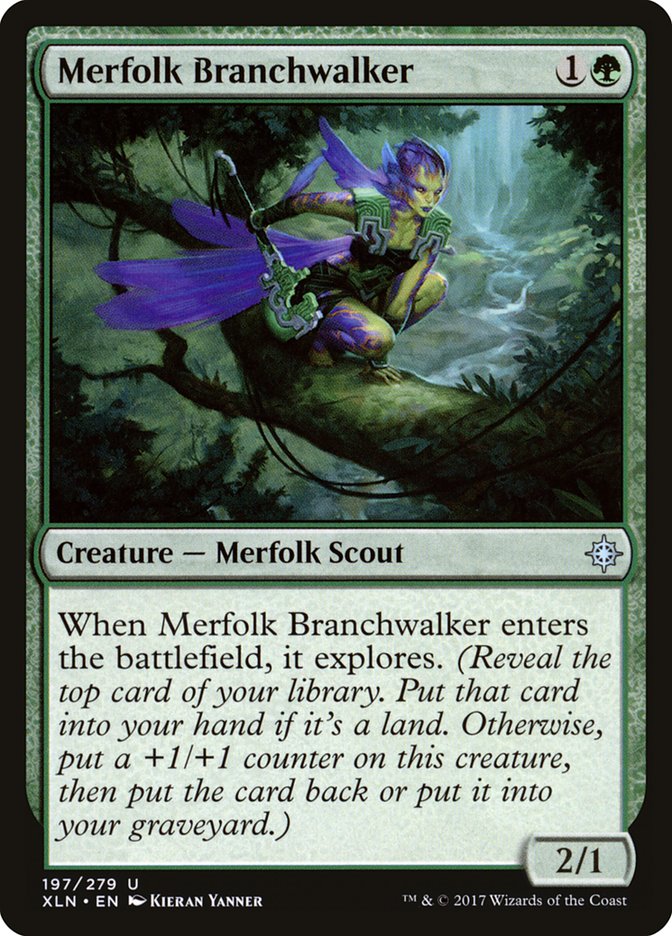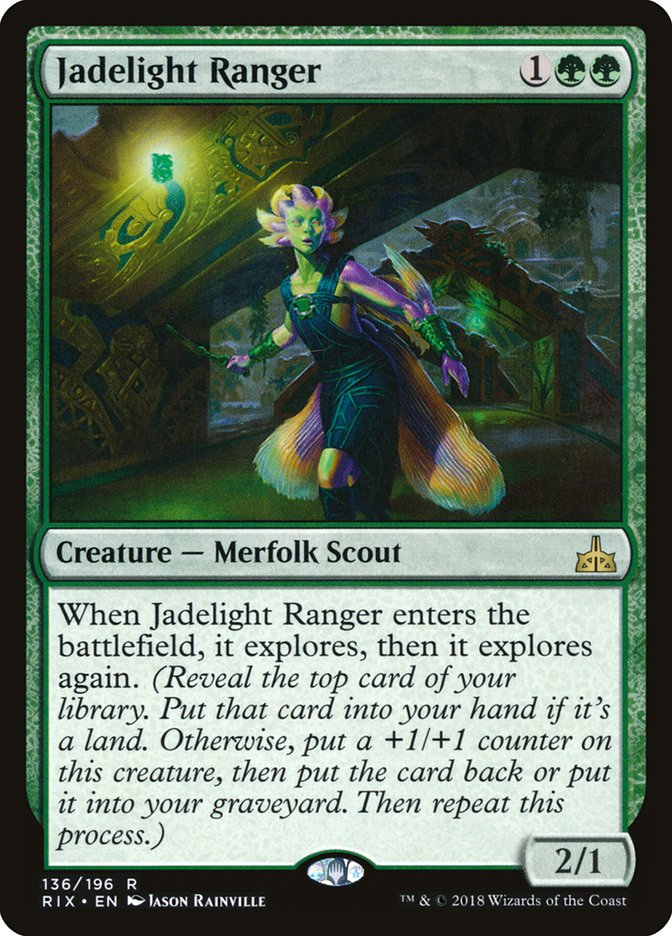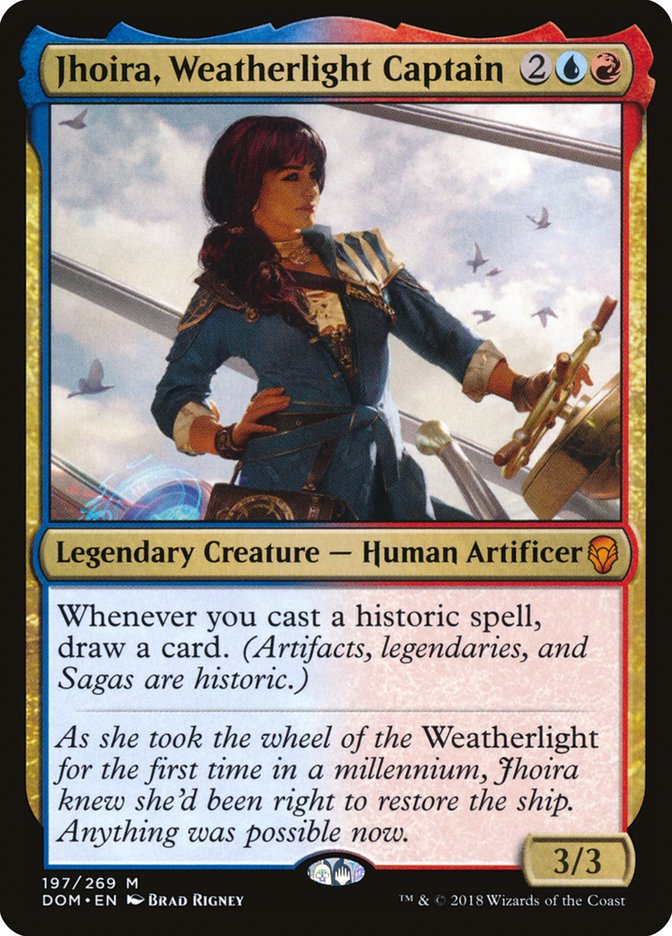Historic cards. Sagas. Legendary sorceries.
My first encounter with Magic’s original plane will be when Dominaria is released, and I’m already entranced by the lore and
flavor of the set. That’s not going to be the focus of my article today
though of course, but instead let’s talk about a few of the cards previewed
so far that I’m incredibly excited about, starting with the card that
stands above the rest:
I can’t believe it! A Mox is returning to Standard and all I have to do to
abuse it is play legendary creatures and planeswalkers.
Well, guess what? That’s all I wanted to do anyway!
Before moving on, I want to make sure to note that Mox Amber only works
with colored legendary creatures and planeswalkers, so Hope of Ghirapur and
Heart of Kiran, among others, won’t be enough to allow Mox Amber to add
mana. That’s fine with me, of course, but wanted to make sure to get that
out of the way.
I haven’t been excited to use a single card in a very long time as I don’t
think I can overstate how powerful being able to play an additional mana
source in the early to mid-game is. I’m not jumping out on a limb by saying
that Mox Opal is one of the five best cards in Modern, and it requires you
to build your deck with an abundance of artifacts, which are traditionally
lower power cards because any color can play them in order to operate.
Mox Amber won’t be able to be activated in the early game as consistently
as Mox Opal is in Modern, as requiring a legendary creature or planeswalker
will usually take a couple of turns to get online. That’s fine with me
though, as Mox Amber can allow a midrange deck to either accelerate to a
higher point on the curve before the opponent or start double-spelling
earlier to press an advantage. Still getting this advantage as early as
possible is critical, so let’s take a look at the legendary creatures and
planeswalkers we can use to enable Mox Amber in Standard.
Not only is Oviya Pashiri, Sage Lifecrafter the only legendary creature
with converted mana cost one to be able to use with Mox Amber, it’s also an
extremely long name that I’m just now getting used to typing out. That long
name isn’t going to keep it from becoming a Standard staple though, so I
might as well get used to writing it. I believe Oviya can fill a role
similar to Thraben Inspector before, as a 1/2 for one that sets the table
for the rest of the deck. Sure you don’t get the clue Coken, which
guarantees another card, but instead you’ll have the ability to make
creature tokens with excess mana. The second ability in particular is
valuable as you can make incredibly large tokens with it, as I’ve learned
from Voice of Resurgence over the years.
If we’re going to be playing a one drop legend on the merit of enabling Mox
Amber, it would be good to know what our best starts can look like.
Consider this opening:
Turn 1: Land, Oviya Pashiri, Sage Lifecrafter, Mox Amber, Llanowar Elves
Turn 2: Land, four-drop
What that exact four-drop is can vary, but playing a four-mana card on turn
2 in Standard is absurd. And this doesn’t take into the consideration the
rare games where you’ll have another Mox Amber and can play a five-drop
such as Nissa, Vital Force on the second turn, threatening to ultimate the
following turn! I don’t know how that is remotely beatable in Standard, and
those are going to be the games I live for.
These games will, of course, not be the majority, but the point is the
upside is incredibly high when having access to Mox Amber and a way to
enable it on the first turn of the game, and that’s what Oviya provides.
Plan A rarely comes together in a game of Magic, so backup plans are a
necessity.
Rishkar, Peema Renegade looks to be a great addition to this core when
building. Not only is it a legendary creature for Mox Amber, it also can
turn your Oviya into a more respectable threat and another mana
creature. It’s also a solid turn 2 play after starting the game with a
Llanowar Elves. With the additions of Mox Amber and Llanowar Elves to the
format, green-based decks have the ability to speed up tremendously.
That’s all nice, but generating an abundance of mana early in the game
while playing legendary creatures and planeswalkers probably isn’t enough,
right? If only there was some way to get paid back for building a deck in
this specific fashion…
Hmm, well I guess that’s probably good enough. I have often looked at
Genesis Wave and thought it should be reprinted in Standard, except only
cheaper. Okay, maybe I haven’t thought that, but wow does Kamahl’s Druidic
Vow have potential. You can only get legendary permanents, not any
permanent, but that’s not much of a drawback, all things considered. The
largest drawback is the fact that this is a legendary sorcery, meaning you
can only cast it when you have a legendary creature or planeswalker on the
battlefield. Obviously the goal of a deck built around this would want to
have one of those permanents on the battlefield, but sometimes you don’t,
meaning you wouldn’t be able to cast this.
Playing Kamahl’s Druidic Vow for X=6 is basically like a Collected Company
for any planeswalker, except you get each one you reveal as well as lands
and legendary creatures. Just writing that sentence made my spine shiver,
and I can’t wait until the first time I get to cast this! Kamahl’s Druidic
Vow isn’t the only legendary sorcery I’m excited about though.
When you’re filling your deck with planeswalkers, the one thing you really
want to do is take extra turns because that entails activating your
planeswalkers additional times. Karn’s Temporal Sundering is not only an
extra turn at the cost of six mana, which is a fair rate in Standard, but
you also get to bounce any permanent you want before you take your extra
turn! This not only easily helps you stabilize, but it can also turn racing
situations right around.
There’s one more legendary sorcery that I’m very excited about
as well to join these two.
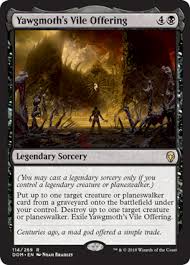
When you first start reading Yawgmoth’s Vile Offering, it looks like any
other random reanimation spell we’ve seen in the past, but let me assure
you that it’s not. For five mana you can reanimate any creature or
planeswalker from any graveyard. Five mana is the usually going rate for a
reanimation spell in Standard these days, so being able to choose the
graveyard is an upgrade on its own, but you can also return a planeswalker
as well. This means you could reanimate a Liliana’s Death’s Majesty which
also returns another creature, like Gonti, Lord of Luxury, onto the
battlefield. But that’s not all! For your troubles of this being a
legendary sorcery you also have an optional Ruinous Path attached for free!
Although there are considerable downsides in these legendary sorceries, as
they are not only expensive mana-wise but also require a legendary creature
or planeswalker on the battlefield, the upside of each one is game-changing
power. Going three colors while trying to play plenty of legendary
creatures and planeswalkers isn’t an easy thing to do, but here’s my first
rough draft of a Sultai deck composed of the cards we’ve been talking about
so far.
Creatures (23)
- 4 Llanowar Elves
- 2 Gonti, Lord of Luxury
- 3 Oviya Pashiri, Sage Lifecrafter
- 3 Rishkar, Peema Renegade
- 2 The Scarab God
- 4 Merfolk Branchwalker
- 4 Jadelight Ranger
- 1 Muldrotha, the Gravetide
Planeswalkers (6)
Lands (22)
Spells (8)

I’ve already talked about the green shell of the acceleration of the deck,
and we need a good reason to branch that into three colors. This build is
mostly all green and black with just a slight blue splash for some
important pieces.
Well an important piece might have been an understatement. Okay, I’m not
here to tell you about how good The Scarab God is, especially with extra
mana because I assume you already know that. So let’s move on.
When Llanowar Elves was announced to be in Dominaria and everyone
was trying to decide what the best three-drop to play a turn early was, my
mind instantly went to Nissa, Steward of Elements. The normal play pattern
on turn 2 will be to start by scrying two and if there is a land among the
two cards to put the land second from the top. It doesn’t matter what the
other card is; just untap and 0 Nissa, revealing the land, and further
cascade the mana advantage you started with. I too often see people put the
two cards on the bottom after scrying with Nissa in the early game where
making extra land drops would be the most powerful thing to do.
During each of your turns, you may play up to one permanent card of
each permanent type from your graveyard. (If a card has multiple
permanent types, choose one as you play it.)
Even though both The Scarab God and Nissa, Steward of Elements are
perfectly good reasons to splash blue in the deck, another incredibly
powerful card that I can’t wait to use is Muldrotha, the Gravetide. With
the ability to play permanent cards from your graveyard each turn, you’ll
be able to have an incredible amount of action each turn when you’re able
to untap with this six-drop as long as your graveyard has been getting
filled. Now you can still only play one land a turn and you have to pay for
any spell you cast, but it essentially fills your hand back up at no cost.
Muldrotha, the Gravetide does have the traditional drawback of being a six
mana creature that doesn’t have an immediate impact on the battlefield
unless you have more mana to cast other spells. Standard is currently an
environment filled with Vraska’s Contempt, Ixalan’s Binding, and Cast Out
everywhere, so ultimately Muldrotha may not be good enough for the format.
I’ll still be trying to make it work, and even if it dies but doesn’t get
exiled, there’s always Yawgmoth’s Vile Offering and Liliana, Death’s
Majesty to reanimate it back onto the battlefield.
In order to help enable Muldrotha, the Gravetide, as well as fix our mana
and draw steps, I’ve included a full playset of Merfolk Branchwalker and
Jadelight Ranger. It’s possible that we should be looking at other
efficient ways to fill the graveyard like Champion of Wits or Search for
Azcanta, but it’s hard to fit everything you want to play into a 60-card
deck!
They also work well with Rishkar, Peema Renegade as additional mana
creatures when they have a +1/+1 counter on them, either from Rishkar or
from exploring. Even though they aren’t legendary to enable Mox Amber, the
other synergies they provide is worth the slot.
Even though I’m excited to try out Sultai when trying to build around Mox
Amber, it’s far from the only place for the powerful new artifact. There
are so many amazing legendary creatures in the set that I can’t wait to try
other combinations as well. I’m not sure if it’s because of the
announcement of Brawl, Mox Amber, legendary sorceries, or maybe a
combination of the three, but I’ve never been as excited to cast legendary
creatures and planeswalkers in my entire Magic career!
Take Jhoira, Weatherlight Captain, for example. Can you imagine playing
this card, then playing Mox Amber and drawing a card while being able to
leave up mana for a Spell Pierce? Maybe follow that up the next turn with
The Locust God? There are so many possibilities when starting to build
around Mox Amber, and I can’t wait to explore them all.
It looks like I’ll be the Standard player on my team at both#SCGATL and #SCGBALT, the first
tournaments that will include Dominaria, and I’m thrilled that
this set is promoting the things I love to do in Magic. No matter what I
end up deciding to play in Standard between now and then, one thing is for
certain…
Dominaria
will be legendary.


